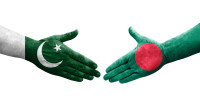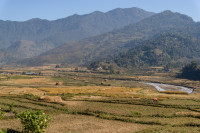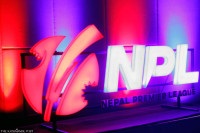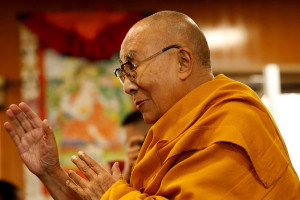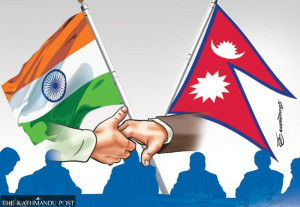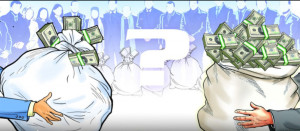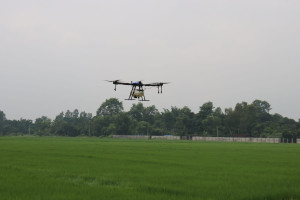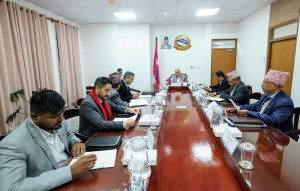Columns
Failures galore, with hints of hidden malice
Recent events have exposed the failures of the government, the police and the media.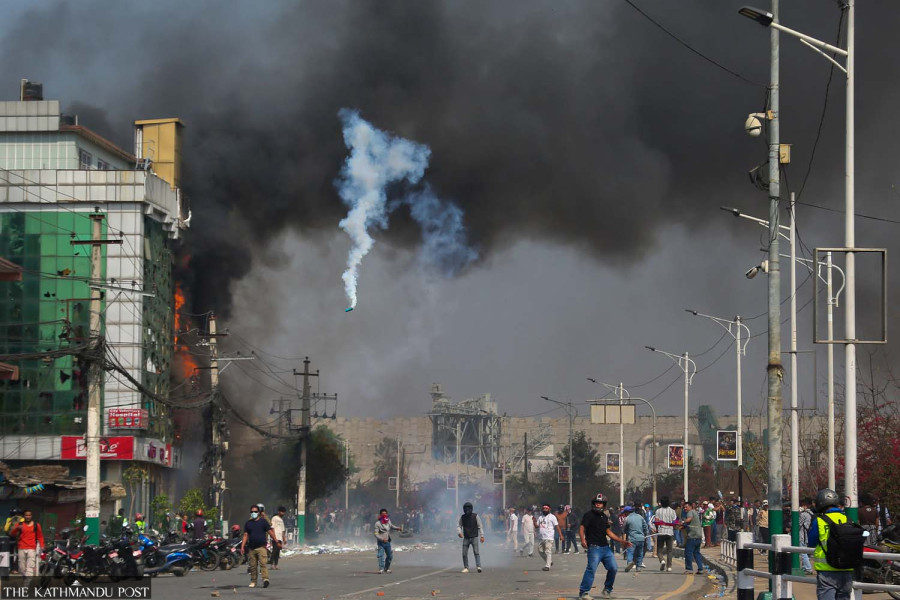
Ajaya Bhadra Khanal
It was as if the government itself wanted violence.
When the monarchists announced a mass protest on March 28, calling for the restoration of the Hindu Kingdom through a new political understanding, the government braced for violence. The actual unfolding of events turned out to be beyond anticipation, leading to clashes, arsons and shootings. Two died, and more than 53 people were injured, many of them innocent commuters.
Initial reports blamed the pro-monarchy supporters for unleashing violence. However, as videos and testimonials began to appear in social media, it appeared that the government and the police were equally to blame and could have played a role in instigating violence.
Public mood also began to shift gradually. At first, people thought the pro-monarchy protesters were to be blamed for the anarchy, but then, as days passed and new information emerged, public ire was once again targeted against the government and the police.
The recent series of events have stained the image of the government, the mainstream political parties, the police and the media. Their image was already in deep water, but now they will have to face further loss of credibility and people’s trust.
The Nepal Police has always been highly politicised; its leadership is often forced to be loyal to the political leaders who appoint them. This time, the police have also been incompetent, malicious and unrestrained.
The Nepal Police, as a critical institution, not only failed to maintain law and order, but it also failed to protect innocent people and communicate during the crisis. It violated a central tenet of crisis communication: Always tell the truth.
The police did not provide a clear timeline of events and tried to hide their actions. It also attempted to evade the question of why they felt the need to shoot at innocent people. The version of the police, at least their public one, conflicted with witness testimonials, videos, and their own internal report. It clearly shows that the police are trying to hide their actions as well as their incompetence.
While the violence unleashed by the protestors needs to be condemned and punished, it is even more important to identify the real actors and decisions that triggered it to ensure that the state machinery is not misused and abused at the whims of corrupt political masters.
Nepal’s media is currently facing an existential crisis. They often fail to provide an impartial, objective account of events. For example, on the day of the protests and the days that followed, the media could not provide an in-depth account of what transpired. People had to rely on videos and testimonials on the social media accounts to understand what was happening. At the end of the day, the media did not even know how the violence had started, how many people were injured or how many shots the police had fired.
It took the media a week to find out how many people had been shot. The media’s bias towards the pro-monarchy forces was so absolute that it affected their ability to report on the events.
While objective reporting, the lifeblood of journalism, failed, opinions and editorials came cheap. Most of these opinion pieces spent their energy defending the republic and attacking the monarchists. It was as if the media felt the need to defend democracy and republicanism. Indeed a noble intent. But, in the process, the media died. It failed to carry out its core function of reporting facts and holding power to account. The media was neither able to report on facts nor hold power to account.
There are a multitude of factors on why the media is failing in Nepal. But it has to start with a genuine introspection.
Of course the media industry is in crisis because the standard business model—that of earning from subscriptions, advertisements and core media-related services—does not work in Nepal. It is the economy, which does not offer a sustainable model for the media industry. In the face of such an existential crisis, the media have to turn to nefarious services, and often extortion, to survive. It is for this reason that the media industry in Nepal have developed unhealthy linkages with its patrons, whether they are corrupt politicians, crony capitalists, or errant public servants.
Then there is the question of media culture and capacity, a topic that deserves more space and discussion.
The government’s failures, on the other hand, are even more stark. As former prime minister Pushpa Kamal Dahal alleged during the mass meeting on March 28, the current government is controlled by a coterie of kleptocrats and crony capitalists. Media reports in the past few weeks also indicate a gradual takeover of Nepal’s financial sector, including the Nepal Rastra Bank, by a group of “middlemen” close to Prime Minister KP Sharma Oli. Although the Financial Action Task Force has placed Nepal on its grey list, the government continues to promote shady crony capitalists implicated in corruption and manipulation of the finance sector.
This does not bode well for the country.
After the events of March 28, the pro-monarchy movement may have suffered a minor dent, but the movement itself is unlikely to end anytime soon. This political movement is connected to a new type of culture war, which in turn is linked to the eternal politics of identity. It is also linked to the widespread public discontent. The pro-monarchy movement has an affinity with the Hindu religious movement, a resurgent Nepali nationalism, and people’s discontent with the ruling regime.
It is important to note that after the 2006 peace accord, Nepal’s politics was primarily driven by the Maoist agenda. During the first Constituent Assembly, the Maoists promoted a model of federalism and state restructuring that required the traditional dominant identity groups to sacrifice their nationalism in favour of the minorities and marginalised ethnic groups. This led to widespread discontent and the resurgence of traditional Nepali nationalism that thrust Oli to power. This same undercurrent has now altered its course and is propelling the pro-monarchist forces.
Given this context, the ruling regime’s strategy to discredit the pro-monarchist forces, malign them as violent anarchists and use state power to suppress them is likely to fail. Worse, the ruling regime is doubling down on its errant ways, resisting public pressure to reform, even when the people can clearly see its corruption, impunity and nepotism.




 12.12°C Kathmandu
12.12°C Kathmandu.jpg)
